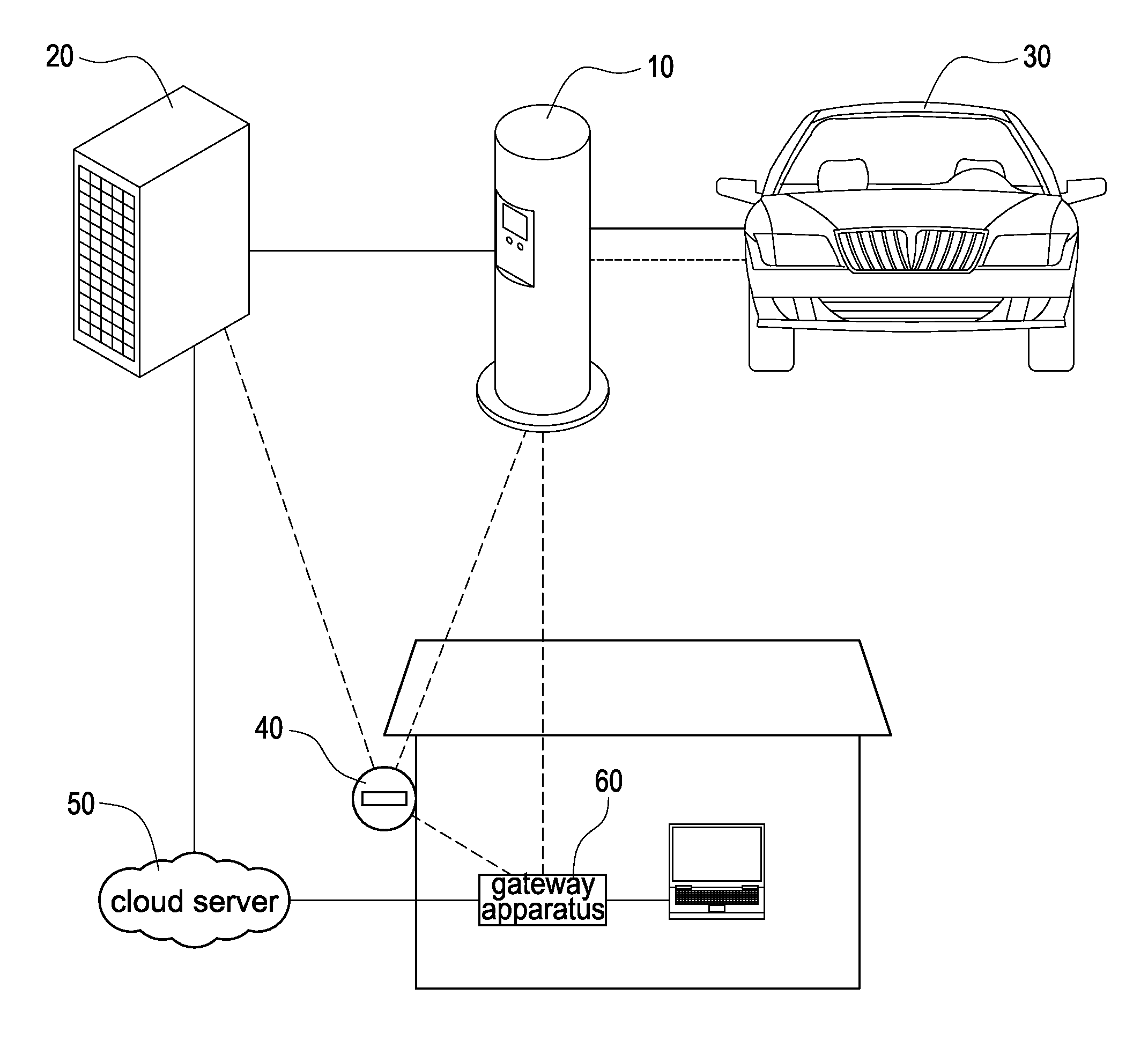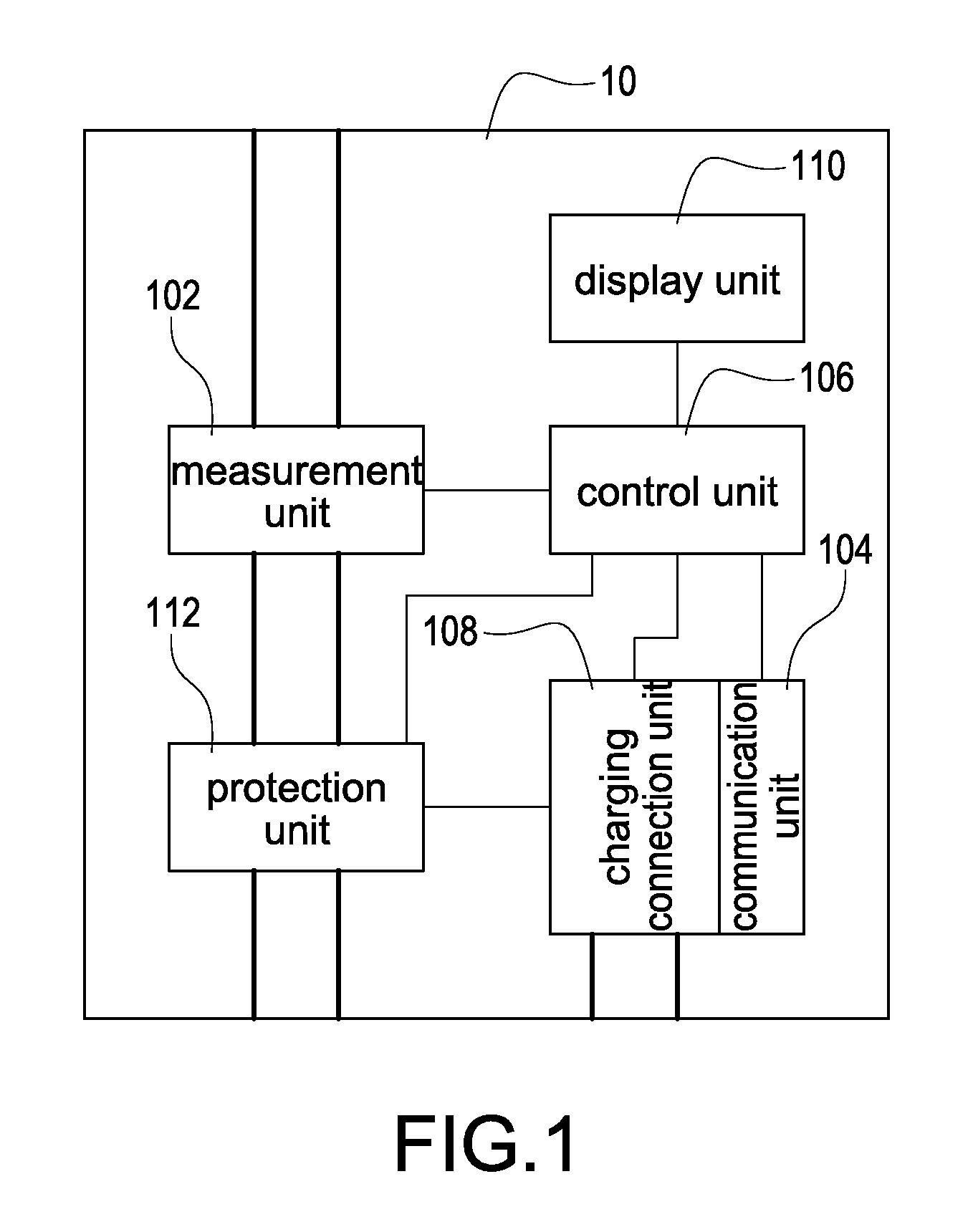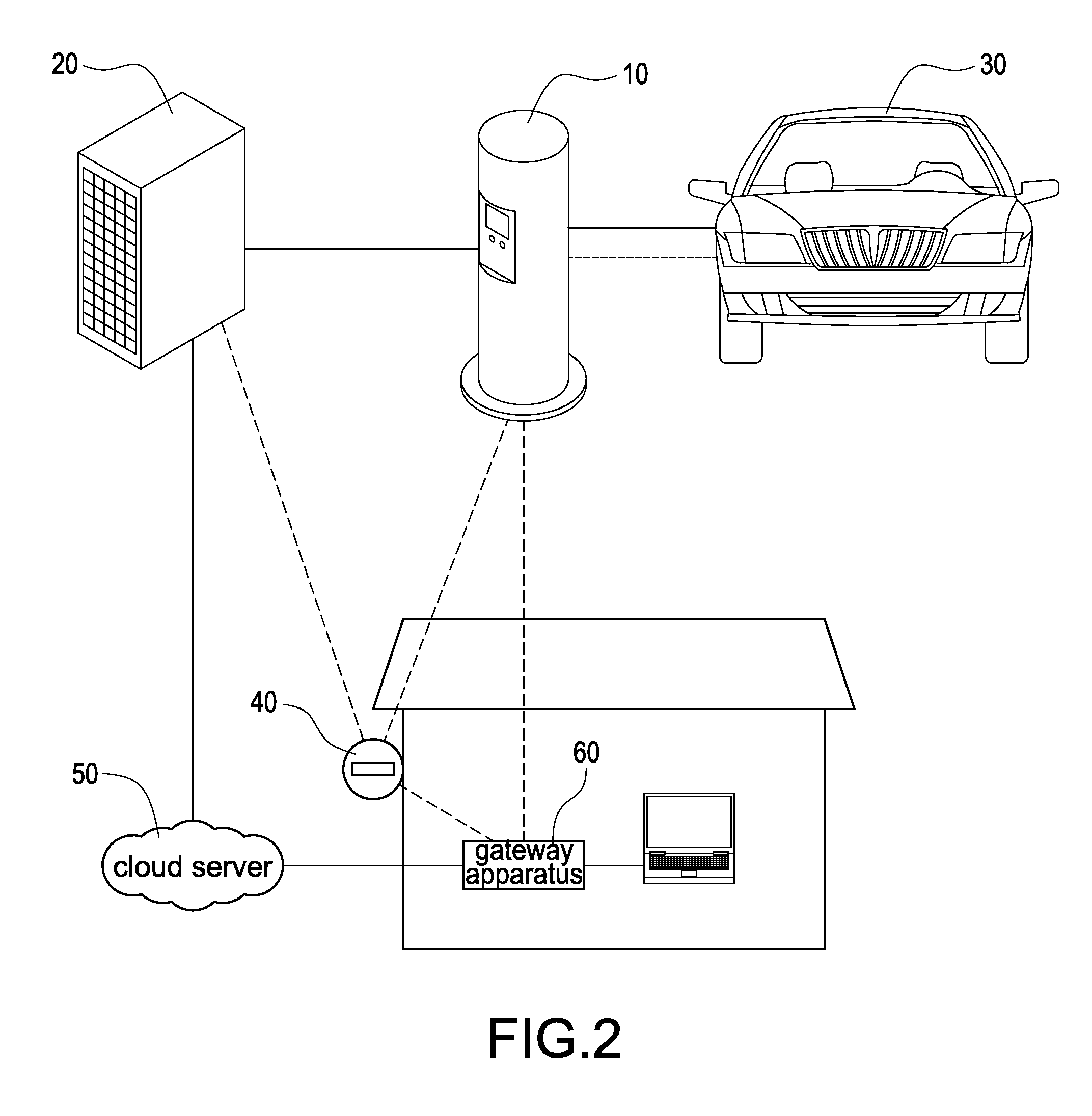Smart charging system for mobile vehicles and method of operating the same
a charging system and mobile technology, applied in secondary cell servicing/maintenance, electrochemical generators, batteries, etc., can solve the problems of cdma modems and cellular network communication being major drivers of system costs, hardware costs of evse themselves according to plugs, and cost simply being too high, so as to minimize overall costs and effective management of ev charging and grid loads
- Summary
- Abstract
- Description
- Claims
- Application Information
AI Technical Summary
Benefits of technology
Problems solved by technology
Method used
Image
Examples
first embodiment
[0029]The detailed structures and operations of the smart charging system for mobile vehicles will be described hereinafter with a number of embodiments. Reference is made to FIG. 3 which is a schematic architecture block diagram of the smart charging system for mobile vehicles according to the present disclosure. This architecture possesses a number of cost saving advantages with simplicity, while still allowing for all of the required smart grid connectivity. As shown in FIG. 3, it is assumed that the advanced metering infrastructure (AMI) is provided and the gateway apparatus 60 is a home energy gateway (HEG). Hence, the user can select the preferred charging demand and then the gateway apparatus 60 and the charging apparatus 10 are used to exchange information.
[0030]To take full advantage of the offerings of the smart grid, and to allow for a universal interface to the vast array of utility companies, the gateway apparatus 60 is required. This allows connecting multiple smart en...
second embodiment
[0035]Reference is made to FIG. 4 which is a schematic architecture block diagram of the smart charging system for mobile vehicles according to the present disclosure. As shown in FIG. 4, all features that were described in the baseline architecture of FIG. 3 are still available, except for the interconnection of any household smart appliance. That is, this architecture considers a home without the Home Energy Gateway (HEG). To achieve this, Wi-Fi is provided as an optional inexpensive add-on available to consumers that choose not to have a gateway, allowing for the path of data transfer to the cloud server 50. In this case, the smart charging apparatus 10 automatically detects that the gateway is missing and automatically begins communicating directly to the AMI meter 40 using ZigBee communication. Therefore all instantaneous household power data is still available to the charging apparatus 10, even without the gateway. Especially, in this embodiment, the charging apparatus 10 is c...
third embodiment
[0036]Reference is made to FIG. 5 which is a schematic architecture block diagram of the smart charging system for mobile vehicles according to the present disclosure. In this embodiment, a household does not have an Advanced Metering Infrastructure (AMI) meter. This may be desirable in the short-term for some locations to overcome the challenges associated with replacing analog electrical meters that may currently exist at a residency, while still allowing the advantages of various billing and time-of-use implementations that can be configured for the electric vehicle charge time optimization. In this case, instantaneous household load information is not available and the charging apparatus 10 has to act into a limited control state. However, this situation can be improved by using the E2E communication of the smart charging apparatus 10 to gather loading information from the neighborhood sharing the same transformer. This allows the possibility of providing better control strategi...
PUM
 Login to View More
Login to View More Abstract
Description
Claims
Application Information
 Login to View More
Login to View More - R&D
- Intellectual Property
- Life Sciences
- Materials
- Tech Scout
- Unparalleled Data Quality
- Higher Quality Content
- 60% Fewer Hallucinations
Browse by: Latest US Patents, China's latest patents, Technical Efficacy Thesaurus, Application Domain, Technology Topic, Popular Technical Reports.
© 2025 PatSnap. All rights reserved.Legal|Privacy policy|Modern Slavery Act Transparency Statement|Sitemap|About US| Contact US: help@patsnap.com



